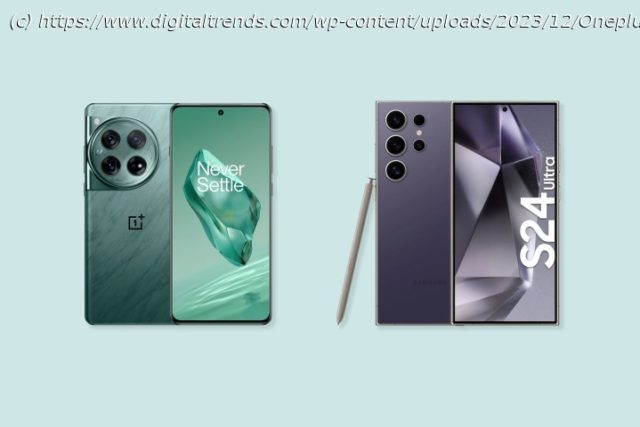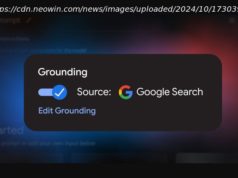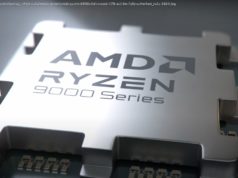Want to choose between the Samung Galaxy S24 Ultra and OnePlus 12 as your next phone? Here are the points to note before taking the plunge.
2024 has barely begun, and we already have two of the most compelling Android flagships to launch this year: the Samsung Galaxy S24 Ultra and the OnePlus 12. While the OnePlus 12 banks on top-notch hardware, superfast charging, and an unrealistically bright display, the Galaxy S24 Ultra improves upon an already promising set of cameras and promises longevity through seven years of software updates.
The Galaxy S24 Ultra was released on January 31, and the OnePlus 12 was announced globally for release on February 6. For a starting price of $1,300, the Galaxy S24 Ultra offers a strong backbone of features that rely on Google’s Gemini Nano framework to run myriad AI applications on the device
The OnePlus 12, like recent OnePlus flagships, touts hardcore specs, a new and improved camera setup, and the welcome return of wireless charging. It is also much lucratively priced, at $800, as compared to the Galaxy S24 Ultra.
The OnePlus 12 and Samsung Galaxy S24 Ultra are dominant choices in their respective price segments. While they’ll likely lie far apart on the price scale, similar features make them each others’ worthy competitors. If you look forward to buying one of these phones, here is what you should expect them to offer.Samsung Galaxy S24 Ultra vs. OnePlus 12: specsSamsung Galaxy S24 Ultra vs. OnePlus 12: design
Instead of reinventing the respective designs, both Samsung and OnePlus are sticking with the same designs from last year with minimal changes. The biggest design change on the Galaxy S24 Ultra comes in the form of a titanium frame — unapologetically inspired by the iPhone 15 Pro — surrounding the phone from all four edges. Notably, the titanium frame is exclusive to the Ultra, while the other two Galaxy S24 devices will continue to feature a toughened aluminum alloy frame from the previous generation. This new material does not make the Galaxy S24 Ultra substantially lighter, despite lightweight and durability being key attributes of titanium.
The buttons, ports, and camera module on the Galaxy S24 Ultra stay where they were previously. Despite initial rumors, the Galaxy S24 Ultra has shed a few millimeters and is now thinner than the Galaxy S23 Ultra and OnePlus 12. The S Pen has been carried over for yet another generation and now has a flatter head to match the sharp edges at the top and bottom. Meanwhile, the speaker grille from the Galaxy S23 Ultra has been replaced by a simpler bar-shaped opening at the bottom. The titanium alloy renders a smoother texture than the shiny frame from the previous generation, even though it may appear coarse. There are new yellow and violet colors this time around for the Galaxy S24 Ultra, while Samsung is dropping the green from last year.
In his Galaxy S24 Ultra review, Digital Trends’ Andy Boxall highlights that the titanium frame is visually more appealing, less curvy, more grippy, and appears to be more scratch-resistant than the Galaxy S23 Ultra.
Other changes to the design include a display that is now flatter along the edges to, as Samsung claims, improve visibility and offer better productivity. The Galaxy S24 Ultra will be the first smartphone to feature the new Gorilla Glass Armor, which is significantly tougher than the previous Victus 2 and reduces reflectivity by up to 75% to improve readability on the display. The flat screen further improves writing with the S Pen.
Like Samsung, OnePlus is sticking to the previously tried and tested design seen on the OnePlus 11 and the OnePlus 11R — but the camera bump is noticeably more prominent than the previous year. To mark the differences, the OnePlus 12 gets a textured finish under the back glass, identical to the Marble Odyssey edition of the OnePlus 11. The texture is limited to a new green color variant, while two other colors — white and black with matching chrome-finish frames — come with plain backs.
Despite the same design, the OnePlus 12 weighs 220 grams (7.76 ounces) compared to the OnePlus 11’s 205g (7.23 ounces) and is noticeably thicker. These changes have seemingly been made to make room for a larger battery on the OnePlus 12. As my colleague Christine Romero-Chan points out in her OnePlus 12 review, the thin frame lends to an illusion of the phone being slimmer than it actually is. However, with brands like Samsung withdrawing from the curved-edge club, the OnePlus 12 may not seem as premium or appealing to everyone.
All of the Galaxy S24 phones offer ultimate dust and water resistance with an IP68 rating. This means it can be doused under freshwater for up to 30 minutes at a depth of 1.5 meters (roughly 5 feet). In comparison, the OnePlus 12 only comes with an IP65 rating. While that is technically an upgrade over the OnePlus 11’s IP64 rating, the OnePlus 12 can only withstand light showers and drizzles and is not recommended to be submerged underwater.
Notably, irrespective of their individual resistance against water, neither company claims complete protection and will not cover water-related damages under warranty. You can, however, purchase Samsung Care+ for unlimited coverage in case of accidental damages, while OnePlus offers no such protection plans for now.
Winner: Samsung Galaxy S24 UltraSamsung Galaxy S24 Ultra vs. OnePlus 12: display
The Galaxy S24 Ultra features a 6.8-inch display — the same size as the S23 Ultra. But to accommodate changes to its design (i.e., the flatter bezels), the display’s resolution has been tweaked to 1,440 x 3,120 pixels, making it marginally taller than the Galaxy S23 Ultra. Notably, the curved part is now limited to the bezels surrounding the display and does not extend to the lit areas.
Besides flatter bezels, the Galaxy S24 Ultra’s display is significantly brighter than the S23 Ultra. The peak brightness is pushed to 2,600 nits compared to the Galaxy S23 Ultra’s 1,750 nits. Notably, peak brightness only signifies the highest level of illumination per pixel (instead of the screen as a whole) and is usually measured when viewing HDR content. The actual brightness of the screen may be lower than the mentioned value. Samsung does not reveal those figures for the overall screen’s brightness.
The upgraded display also supports refresh rates ranging from 1Hz to 120Hz, powered by LTPO technology that allows it to automatically switch to a lower refresh rate based on the frame rate of the screen’s content.
With the Galaxy S24 Ultra’s display set for a significant upgrade, the OnePlus 12 isn’t lagging. It gets a tad bigger 6.82-inch AMOLED panel with 1440 x 3168 pixel resolution. The OnePlus 12’s display also supports refresh rate intervals ranging between 1 and 120Hz, using LTPO technology.
Both phones also allow you to reduce the screen resolution to Full HD+ in order to help conserve battery. On top of that, the OnePlus 12 offers software enhancements to upscale low-resolution videos or automatically convert standard dynamic range to high dynamic range (SDR to HDR) content.
OnePlus’ claims about the display’s brightness surpass Samsung’s by a large margin. The new display gets a massive bump in brightness, now supporting up to 4,500 nits peak brightness with 1,600 nits using the High Brightness Mode. As with the Galaxy S24 Ultra, it’s essential to emphasize the role of HDR content in measuring the peak brightness.
The OnePlus 12 also incorporates features such as a high pulse-width modulation (PWM) frequency of 2,160Hz to reduce eye strain that may be otherwise caused by using the phone under dim light. Meanwhile, the company’s new “Rain Water Touch” tech is designed to let you use the phone even when you have wet hands.






